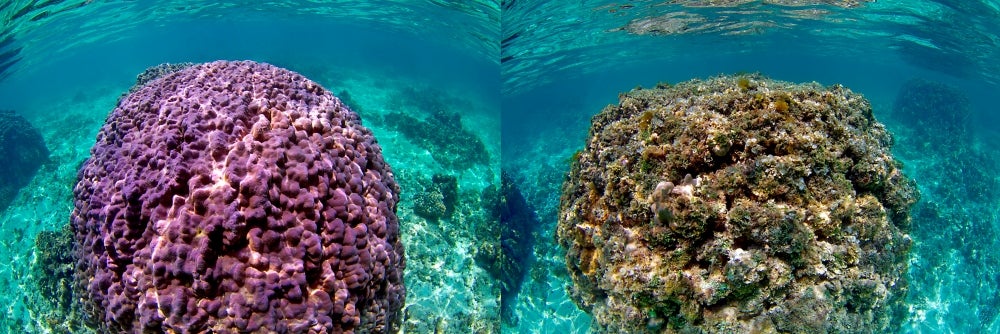
Saving Hawaii's Coral

Many of Hawaii’s once-thriving coral reefs are struggling to recover from recent extreme coral bleaching caused by rising water temperatures. These periodic increased temperatures combined with coastal runoff, fishing pressure and other impacts are all suspected of contributing to slow reef recovery.
As a way of understanding which factors had the biggest effects on Hawaii’s corals, a group of researchers from the collaborative Ocean Tipping Points project, which is co-led by the National Center for Ecological Analysis and Synthesis (NCEAS) at UC Santa Barbara, completed the first-ever comprehensive map of how both humans and natural events influence overall reef health. The team’s findings appear in the journal PLOS One.
“We live in a changing world, and changing oceans are a big part of that,” said co-author Carrie Kappel, Ocean Tipping Points lead investigator and a senior fellow at NCEAS. “Studies like this one provide crucial insights into how we can act locally to improve the resilience of reefs to global changes. This is an approach that can be replicated for reefs elsewhere.”
Reefs across the Hawaiian Islands have both cultural and economic value. Although people have known that natural and human-caused phenomena affect the health and resilience of coral reef ecosystems, little is known about which aspects are more important in each region.
To find out, the group synthesized 10 years of data sets from university and government sources, examining factors they knew had an impact on coral reefs, such as sedimentation, development and fishing.
Their analysis revealed variations in what was inhibiting reef recovery across the islands. On the densely populated island of Oahu, dominant stressors were human activities, such as fishing and loss of natural habitat to coastal development. Sedimentation and nutrient runoff were prevailing forces on less populated islands.
“These are some of Hawaii’s most vibrant coral reefs, so we were determined to better understand how reef ecosystems could be more resilient in the future,” said lead author Lisa Wedding, research associate at Stanford University’s Center for Ocean Solutions.
A big step forward in illuminating the effects on corals of both human activities and environmental stressors, the findings highlight the importance of tailoring strategies based on location to effectively address regional impacts. This approach — synthesizing data from a large geographic area and over a long period of time to get a big-picture perspective on reef health — provides a foundation for further research and informs policies to protect coral reefs.
Data created by this mapping study are available for free at the Pacific Islands Ocean Observing System, where scientists, managers and members of the public can explore and further analyze what drives variation on coral reefs. Users can download data layers in various formats and explore all layers in an interactive map viewer.
This research was supported by the Gordon and Betty Moore Foundation, NOAA Coral Reef Conservation Program, U.S. Department of Agriculture National Institute of Food and Agriculture, and NOAA Hawaiian Islands Humpback Whale National Marine Sanctuary.



